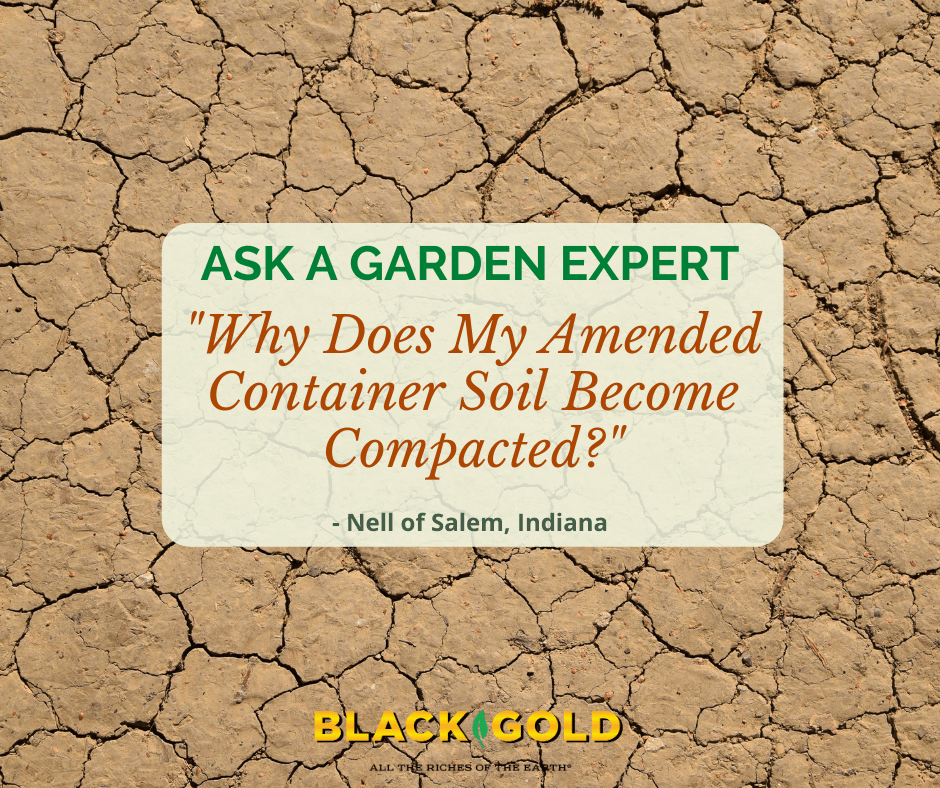
“Why does the soil in my container garden compact super tight? I use garden soil mixed with potting mix and perlite.” Question from Nell of Salem, Indiana
Answer: It sounds like your soil ratios are off, and your in-ground soil is high in clay. If you have not added the right amount of Black Gold amendment or potting soil to clay-rich ground soil, then compaction can be a problem. This is because clay-rich soil has very small particles and becomes compacted very easily. When you add organic matter, such as the peat moss and aged bark found in our potting soil, it lifts the soil, making it more porous and aerated, while allowing it to hold water better. Mineral ingredients, like perlite, also increase aeration and drainage.
 You have two options. Either fill your containers with nothing but potting mix–we recommend either Black Gold Natural & Organic Potting Mix or Black Gold Natural & Organic Raised Bed & Potting Mix–or mix your ground soil with more organic amendments. We would recommend adding a 1:3 ratio of ground soil to Black Gold Garden Compost Blend with added Black Gold Perlite to maintain porosity. (Click here for more tips for amending clay-rich soil and click here to learn more about succeeding with container gardening.)
You have two options. Either fill your containers with nothing but potting mix–we recommend either Black Gold Natural & Organic Potting Mix or Black Gold Natural & Organic Raised Bed & Potting Mix–or mix your ground soil with more organic amendments. We would recommend adding a 1:3 ratio of ground soil to Black Gold Garden Compost Blend with added Black Gold Perlite to maintain porosity. (Click here for more tips for amending clay-rich soil and click here to learn more about succeeding with container gardening.)
Happy gardening,
Jessie Keith
Black Gold Horticulturist


